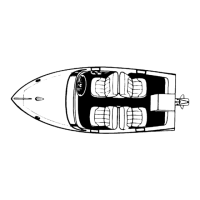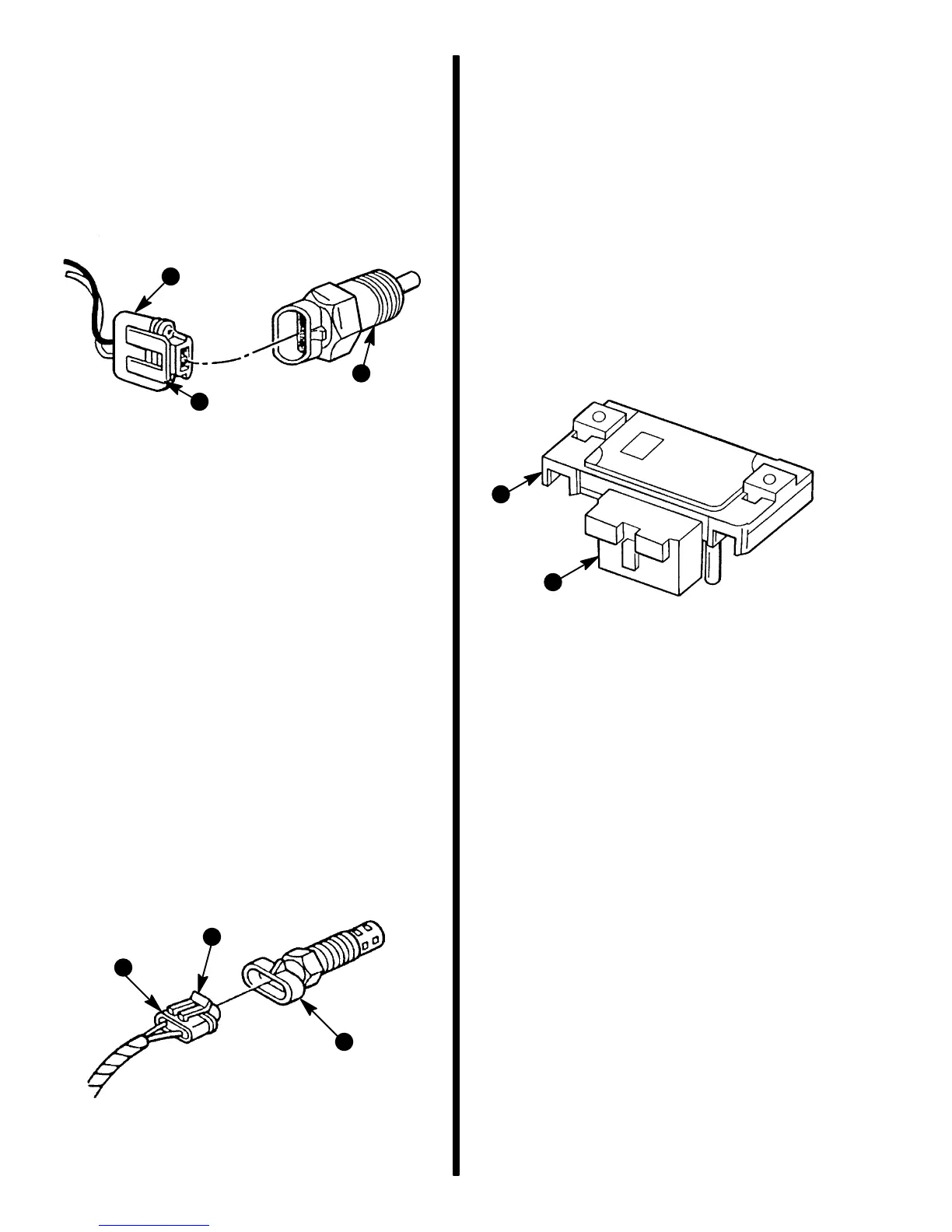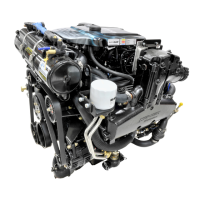90-823225--1 10965E-14 - ELECTRONIC FUEL INJECTION (MULTI-PORT AND THROTTLE BODY)
ENGINE COOLANT TEMPERATURE (ECT)
SENSOR
The Engine Coolant Temperature (ECT) Sensor is a
thermistor (a resistor which changes value based on
temperature) immersed in the engine coolant
stream. Low coolant temperature produces a high re-
sistance, while high temperature causes low resis-
tance.
73052
c
b
a
a - Engine Coolant Temperature (ECT) Sensor
b - Harness Connector
c - Locking Tab
The ECM supplies a 5 volt signal to the ECT through
a resistor in the ECM and measures the voltage. The
voltage will be high when the engine is cold, and low
when the engine is hot. By measuring the voltage, the
ECM knows the engine coolant temperature. Engine
coolant temperature affects most systems the ECM
controls.
A failure in the ECT circuit should set Code 14. Re-
member, this code indicates a failure in the coolant
temperature sensor circuit, so proper use of the chart
will lead to either repairing a wiring problem or replac-
ing the sensor.
INTAKE AIR TEMPERATURE (IAT) SENSOR
[MULTI-PORT INJECTION MODELS ONLY]
The Intake Air Temperature (IAT) sensor is a thermis-
tor (a resistor which changes value based on temper-
ature) mounted on the underside of the plenum. Low
temperature produces a high resistance, while high
temperature causes a low resistance.
73047
a
c
b
a - Intake Air Temperature (IAT) Sensor
b - Harness Connector
c - Locking Tab
The ECM supplies a 5 volt signal to the sensor
through a resistor in the ECM and measures the volt-
age. The voltage will be high when the intake air is
cold, and low when the intake manifold air is hot.
A failure in the IAT sensor circuit should set a Code
23.
MANIFOLD ABSOLUTE PRESSURE (MAP)
SENSOR
The Manifold Absolute Pressure (MAP) sensor is a
pressure transducer that measures the changes in
the intake manifold pressure. The pressure changes
as a result of engine load and speed change, and the
MAP sensor converts this to a voltage output.
73046
b
a
a - Manifold Absolute Pressure (MAP) Sensor
b - Electrical Connector
A closed throttle on engine coast-down would pro-
duce a relatively low MAP output voltage, while a
wide open throttle would produce a high MAP output
voltage. This high output voltage is produced be-
cause the pressure inside the manifold is the same
as outside the manifold, so 100% of outside air pres-
sure is measured. When manifold pressure is high,
vacuum is low. The MAP sensor is also used to mea-
sure barometric pressure under certain conditions,
which allows the ECM to automatically adjust for dif-
ferent altitudes.
The ECM sends a 5 volt reference signal to the MAP
sensor. As the manifold pressure changes, the elec-
trical resistance of the MAP sensor also changes. By
monitoring the sensor output voltage, the ECM
knows the manifold pressure. A higher pressure, low
vacuum (high voltage) requires more fuel, while a
lower pressure, higher vacuum (low voltage) re-
quires less fuel. The ECM uses the MAP sensor to
control fuel delivery and ignition timing.
A failure in the MAP sensor circuit should set a Code
33.

